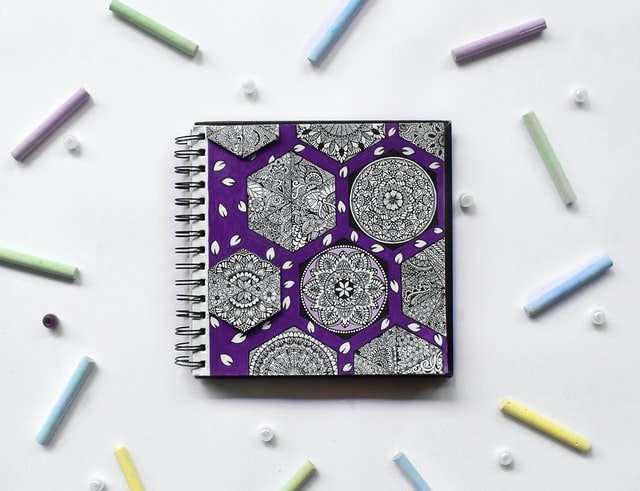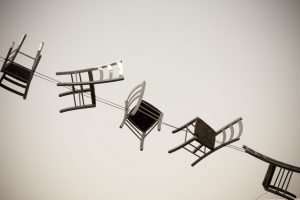It may seem surprising that a blog about the impact of technology, written by an engineer at Google, would feature a painting.
But I think that all engineers need to be aware of what art is and what it does. If you are an engineer working on a project, you should understand why your product has to have the aesthetic qualities that it does. If you are an artist or designer, you should understand the reasons that engineering might be useful to your work.
Someone might claim that “it just works” is sufficient justification for the aesthetics of technology. That’s true enough if all you want is something practical. But if you are trying to build something great, it won’t be enough. You need to love your work. And if you don’t love it, no one else will either.*
Last year, I had the great fortune of meeting a group of talented artists from AT&T’s Innovation Labs in New Jersey. The group was comprised of engineers, designers and product specialists who create some pretty unique technology. After learning more about their backgrounds and how they came to work at AT&T, I couldn’t believe how many of them were trained in art and design.
We often hear that art is a key skill in the tech industry (and vice versa) but I was curious as to why this was the case. How do technical skills influence creativity? How do designers’ artistic backgrounds influence their innovative ideas? These questions led me to several fascinating interviews with the Innovation Labs team, who shared some really incredible insights on the relationship between art and technology.*
Art is the highest form of technology because it improves human lives. We can use art to model, test, and explore our world. Art helps us understand the world. It provides a safe space for experimentation, for learning from mistakes without consequences. It is a playground for testing new ideas without pressure to be perfect.
Trying something new is risky. You don’t know if it will work or if you will even like it. This can be thrilling or terrifying depending on your personality and starting point. For some it’s an opportunity to improve their life and try something new, for others it’s disturbing and uncomfortable.
Emoji are art that we use every day as part of our communication with each other. Emoji help us understand what people mean when they say something in a text or email message. They help relieve some of the pressure of communicating with someone in real-time face-to-face conversation over chat or Skype video calls. They help us remove some of the awkwardness and “social cost” associated with trying to communicate clearly in written form without knowing what the other person thinks about what we are saying.*
I have always been captivated by the work of artists such as Jackson Pollock. I marvel at how someone could create such a composition, but it is not just the structure of the paintings that make them so appealing; it is their complexity and ambiguity.
I think that technology often lacks these qualities. We tend to create software that solves one problem very well and then move on to the next project leaving the old code untouched.
We should learn from our artistic forebears, who were more focused on having a degree of ambiguity and sophistication in their work, which made their work more interesting over time.
My favorite example to use is Jenga; the game itself is very simple, but when you play with other people there are a number of factors like luck, strategy, social interaction and more, which make playing the game much more compelling than a simple puzzle or challenge.
In the last couple of decades, the art world has shifted to a new way of understanding what art is. This isn’t just in terms of style. Modern art rejects traditional approaches to making and appreciating art, with their technical rules and traditions, and makes space for any experience that doesn’t fit into normal aesthetic categories.
This is a very good thing. The idea that there are right answers to questions of what’s beautiful, or what deserves our respect, or whether some experience is an artistic one or not, is a pernicious one. It leads us to take for granted that certain opinions about the “correct” ways to make art are correct, which discourages people from thinking about these issues critically and creatively.
The contemporary art world has become a place where anyone can create anything they want and call it art, and viewers can decide for themselves if it’s something they want to appreciate. This is a great shift from how things were done in the past. We should continue this process by shifting our attitudes toward technology and seeing it as another artistic medium—one whose material can be used to express any human experience, not just those that fit into current technological limitations or cultural assumptions.
At first glance, art and technology might seem like complete opposites. One is concerned with creativity and the other is about creation and order. By digging deeper into the definition of each, however, you can begin to see how one inspires the other.
TECHNIQUE: Art is meant to be a representation of an idea. When the technique used to create the art piece is more important than the idea being conveyed, you are working too hard on your technique. TECHNOLOGY: Technology should always be a means to an end, not an end in itself. If you find yourself spending all your time polishing your code, it’s probably not worth it. If you want to learn ES6 generators, use them for something that matters, not because they are shiny tools.”
What is the nature of art? Is it a tool, or is it a plaything? Does art help us to understand our surroundings, or does it distract us from them?
Art can be both, but technology is rarely an art. This is a problem because technology shapes our world. And while technology has brought us many benefits, we cannot simply assume that it will continue to do so.
Direct observation of the world yields much more reliable data than indirect observation through art. Modern art is about what you don’t see: for instance, in abstract painting, the process of creation and the materials used are as important as the finished product. In contrast, physics and engineering focus on what you do see, and try to understand how things work by observing them directly and dealing with details before building anything.
In principle, then, physics and engineering are more direct than modern art. But when this principle is applied in practice it sometimes fails because of the difficulty in understanding what you see. If you want to understand something by looking at it closely, first you have to know what to look at closely. This requires experience and expertise in visualizing abstract concepts like fluid dynamics or aerodynamics or quantum mechanics.
When I look at a picture I can immediately see whether I like


